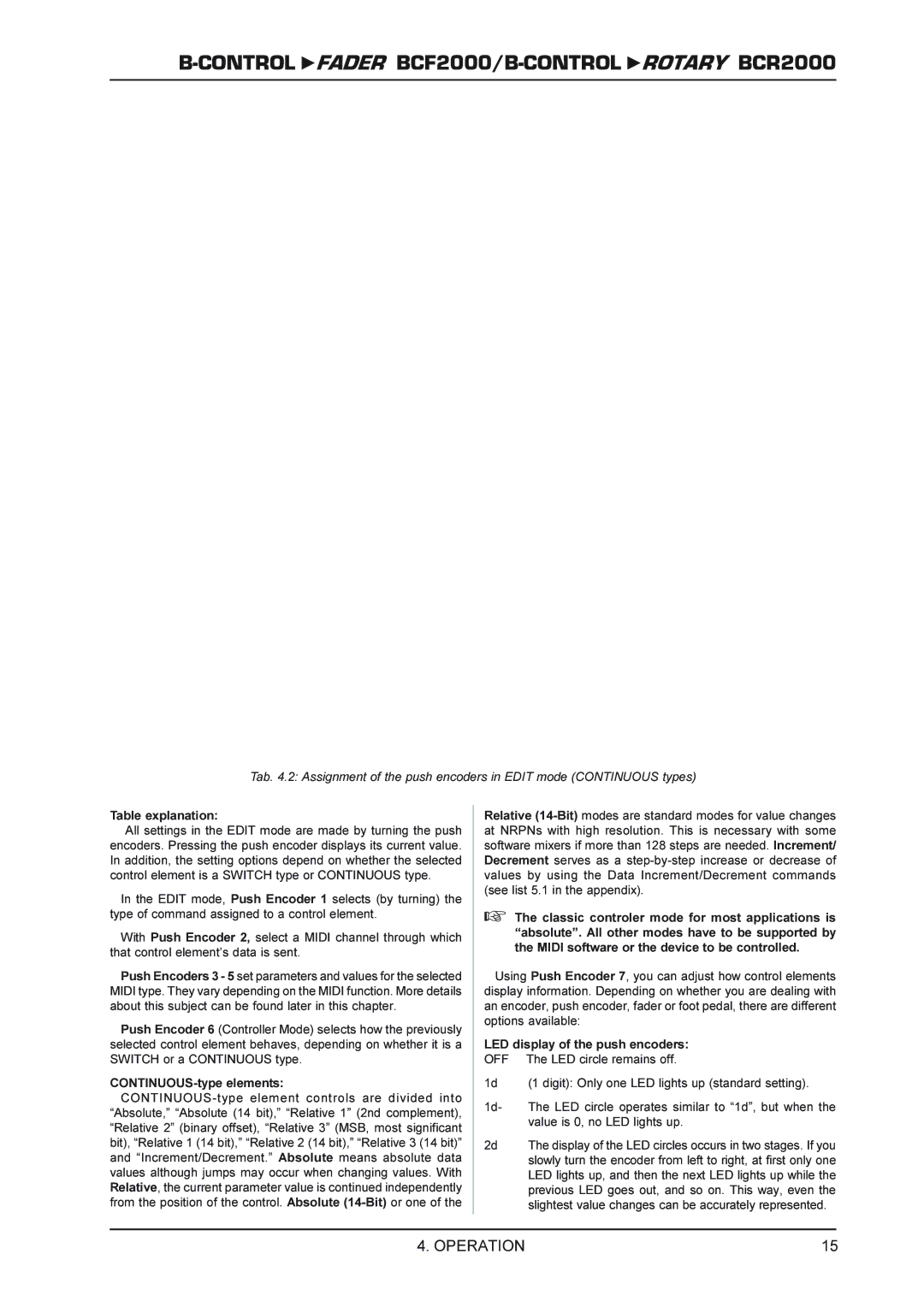BCR2000 specifications
The Behringer BCR2000 is a versatile and innovative MIDI controller designed for musicians, producers, and DJs seeking to enhance their creative workflow. Launched as part of Behringer's line of MIDI controllers, the BCR2000 stands out for its robust features, flexibility, and affordability, making it an excellent choice for both beginners and seasoned professionals.One of the main features of the BCR2000 is its 32 encoders, which offer smooth and precise control over various parameters in music production and live performance. These encoders are continuous rotary knobs that can be assigned to different functions, providing real-time manipulation of MIDI-controlled devices, virtual instruments, and digital audio workstations (DAWs). The encoders are also equipped with LED rings that illuminate to reflect their current values, allowing users to visualize changes instantly.
The BCR2000 boasts an advanced MIDI implementation, allowing it to send and receive MIDI messages seamlessly. This capability makes it compatible with a wide range of software and hardware, including synthesizers, drum machines, and lighting systems. Users can assign MIDI messages to any of the encoders, buttons, and faders, creating custom mapping that suits their unique workflows.
In addition to its full-sized knobs, the BCR2000 features eight faders, which are particularly useful for mixing tasks. These 60mm faders allow users to adjust levels and parameters with precision, providing an intuitive mixing experience. The BCR2000 also includes 16 programmable buttons, which can be assigned to different functions, such as triggering samples or switching between different patches.
Another notable technological feature of the BCR2000 is its ability to operate in different modes, such as MIDI CC (Control Change) mode and MMC (MIDI Machine Control) mode. This flexibility makes it suitable for a variety of applications, from studio production to live performances. The device also includes a USB interface, allowing for easy connectivity with computers and other devices without the need for additional power supplies.
The BCR2000 is constructed with durability in mind, featuring a sturdy chassis that can withstand the rigors of regular use. Its compact form factor makes it easy to integrate into any setup, whether in a studio or on stage. With its comprehensive feature set and user-friendly interface, the Behringer BCR2000 remains a popular choice among musicians looking to elevate their MIDI control capabilities.

